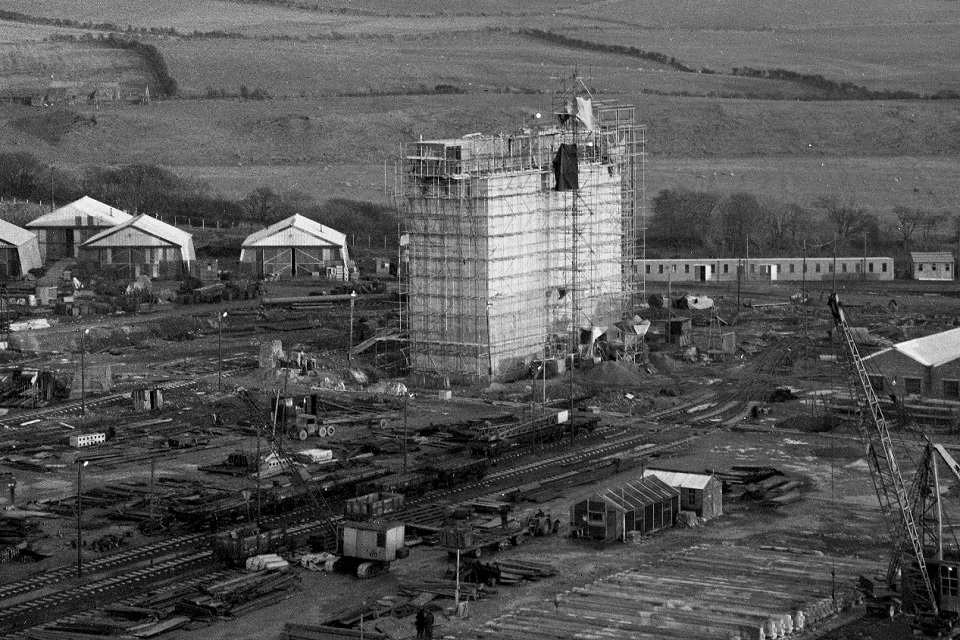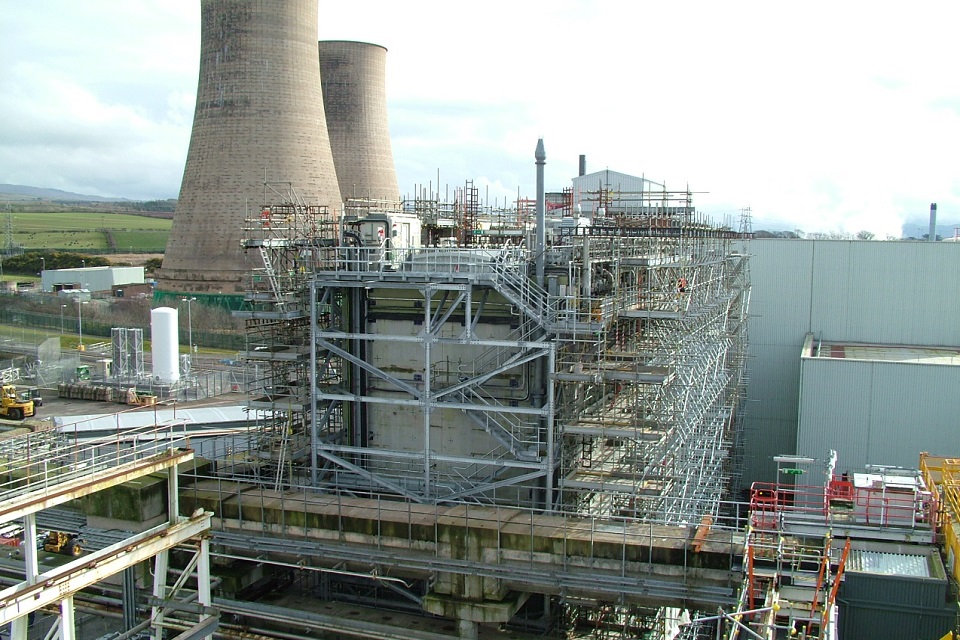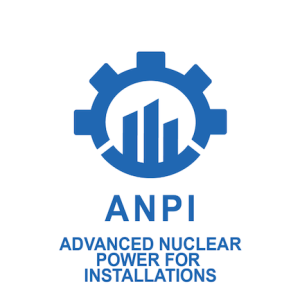 The UK Nuclear Decommissioning Authority (NDA) and Sellafield Ltd have announced the start of work to retrieve waste from the 70-year-old Pile Fuel Cladding Silo (PFCS) at the Sellafield site in West Cumbria. Sellafield described it as “a momentous milestone in the decommissioning story at Sellafield as the first batch of waste was successfully retrieved from the site’s oldest waste store”.
The UK Nuclear Decommissioning Authority (NDA) and Sellafield Ltd have announced the start of work to retrieve waste from the 70-year-old Pile Fuel Cladding Silo (PFCS) at the Sellafield site in West Cumbria. Sellafield described it as “a momentous milestone in the decommissioning story at Sellafield as the first batch of waste was successfully retrieved from the site’s oldest waste store”.
After weeks of preparation and checks, the PFCS retrievals team viewed the work using monitors in the control room of the plant to see a state-of-the-art robotic arm reached into the silo to remove and repackage waste for the first time.
The PFCS was built in the 1950s to store cladding from used nuclear fuel from the Windscale Piles – the first nuclear reactors to be built at Sellafield. The huge concrete silo was designed as a locked vault with no plan for how to future retrieval of the content or decommissioning. It was based on the simple design of a grain silo. The structure is 29 metres long 10 metres wide and 18 metres high and is divided into six tall compartments.
The silo’s six compartments were filled after almost 20 years of operations and it stopped receiving waste in the early 1970s. The building then underwent several upgrades to ensure it could continue to store its contents safely while a plan for retrieval was developed. NDA and Sellafield Ltd say it represents “one of the most complex and difficult decommissioning challenges in the world” and one of their highest priorities. It has stored over 3,200 cubic metres of intermediate level waste for 70 years.
The building then underwent several upgrades to ensure it could continue to store its contents safely while a plan for retrieval was developed. NDA and Sellafield Ltd say it represents “one of the most complex and difficult decommissioning challenges in the world” and one of their highest priorities. It has stored over 3,200 cubic metres of intermediate level waste for 70 years.
It’s also situated in a highly congested part of the Sellafield site and surrounded by a maze of pipelines and other sensitive buildings that make decommissioning the building extremely challenging. During the past 10 years, a massive concrete superstructure has been built around the silo and specially engineered 12-tonne shield doors have been installed on each of its six compartments. In 2017 holes were successfully cut in the top of each compartment, allowing access to the waste for the first time in 65 years.
Sellafield Ltd then designed, manufactured, tested, and installed nine huge modules containing the machinery needed to empty the silo. This was done in collaboration with Bechtel and Cavendish Nuclear Solutions working together as Bechtel Cavendish Nuclear Solutions. Testing of the robot grab was completed earlier in August in preparation for the first waste retrievals from the silo.
 Operators used the grab to remotely reach into the silo and pick up the waste before loading it into a specially designed 3 cubic metre stainless-steel box. Once filled the box will be loaded into a shielded flask and transported to the Box Encapsulation Plant Product Store – Direct Import Facility (BEPPS-DIF), a new above-ground store that has been specially constructed on the Sellafield site. BEPPS-DIF will store the waste safely and securely until it’s ready for immobilisation prior to permanent disposal underground in a Geological Disposal Facility.
Operators used the grab to remotely reach into the silo and pick up the waste before loading it into a specially designed 3 cubic metre stainless-steel box. Once filled the box will be loaded into a shielded flask and transported to the Box Encapsulation Plant Product Store – Direct Import Facility (BEPPS-DIF), a new above-ground store that has been specially constructed on the Sellafield site. BEPPS-DIF will store the waste safely and securely until it’s ready for immobilisation prior to permanent disposal underground in a Geological Disposal Facility.
Sellafield Ltd CEO Euan Hutton said the first retrievals from the PFCS are “a huge step towards delivering our purpose of creating a clean and safe environment for future generations”. This means that “for the first time ever Sellafield is retrieving waste from all four of our legacy ponds and silos”.
NDA CEO David Peattie said: “It’s progress that has been years in the making and has been driven forward by skilled, industry leading specialists working collaboratively.” Similarly, Mike Higgins, PFCS programme manager for Bechtel Cavendish Nuclear Solutions, said achieving this milestone over the last 12-years,” is testament to the hard work, dedication and collaboration of the team, our joint venture partners Cavendish Nuclear, alongside our customer and all our supply chain partners”.
The entire operation has been overseen by the UK Office for Nuclear Regulation (ONR). Paul Dicks, director of regulation – Sellafield, Decommissioning Fuel and Waste, said ensuring legacy waste is safely removed from PFCS and placed into storage facilities that meet modern safety standards is a priority for ONR.
“Our team of specialist inspectors rigorously assessed Sellafield’s safety case submission until we were satisfied that it was safe for retrievals to commence from the facility, and we will continue a programme of regulatory oversight.”
Image (top): All 6 silo doors in situ on the side of the silo
Image (middle): The pile fuel cladding silo under construction in 1951
Image (bottom): The pile fuel cladding silo during an upgrade in the 1990s
All images courtesy of UK Government






